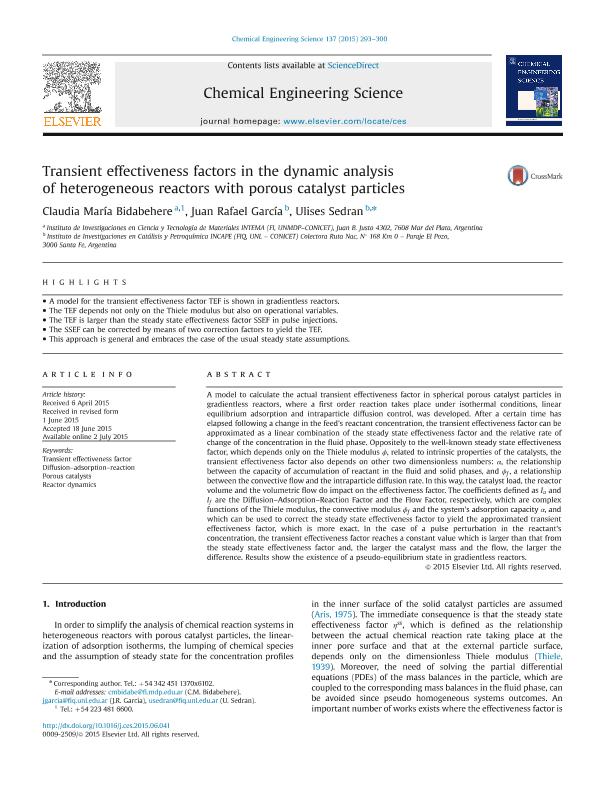Artículo
Transient effectiveness factors in the dynamic analysis of heterogeneous reactors with porous catalyst particles
Fecha de publicación:
12/2015
Editorial:
Elsevier
Revista:
Chemical Engineering Science
ISSN:
0009-2509
Idioma:
Inglés
Tipo de recurso:
Artículo publicado
Clasificación temática:
Resumen
A model to calculate the actual transient effectiveness factor in spherical porous catalyst particles in gradientless reactors, where a first order reaction takes place under isothermal conditions, linear equilibrium adsorption and intraparticle diffusion control, was developed. After a certain time has elapsed following a change in the feed׳s reactant concentration, the transient effectiveness factor can be approximated as a linear combination of the steady state effectiveness factor and the relative rate of change of the concentration in the fluid phase. Oppositely to the well-known steady state effectiveness factor, which depends only on the Thiele modulus ϕ, related to intrinsic properties of the catalysts, the transient effectiveness factor also depends on other two dimensionless numbers: α, the relationship between the capacity of accumulation of reactant in the fluid and solid phases, and ϕf, a relationship between the convective flow and the intraparticle diffusion rate. In this way, the catalyst load, the reactor volume and the volumetric flow do impact on the effectiveness factor. The coefficients defined as Ia and If are the Diffusion–Adsorption–Reaction Factor and the Flow Factor, respectively, which are complex functions of the Thiele modulus, the convective modulus ϕf and the system׳s adsorption capacity α, and which can be used to correct the steady state effectiveness factor to yield the approximated transient effectiveness factor, which is more exact. In the case of a pulse perturbation in the reactant׳s concentration, the transient effectiveness factor reaches a constant value which is larger than that from the steady state effectiveness factor and, the larger the catalyst mass and the flow, the larger the difference. Results show the existence of a pseudo-equilibrium state in gradientless reactors.
Archivos asociados
Licencia
Identificadores
Colecciones
Articulos(INCAPE)
Articulos de INST.DE INVEST.EN CATALISIS Y PETROQUIMICA "ING. JOSE MIGUEL PARERA"
Articulos de INST.DE INVEST.EN CATALISIS Y PETROQUIMICA "ING. JOSE MIGUEL PARERA"
Citación
Bidabehere, Claudia María; García, Juan Rafael; Sedran, Ulises Anselmo; Transient effectiveness factors in the dynamic analysis of heterogeneous reactors with porous catalyst particles; Elsevier; Chemical Engineering Science; 137; 12-2015; 293-300
Compartir
Altmétricas




